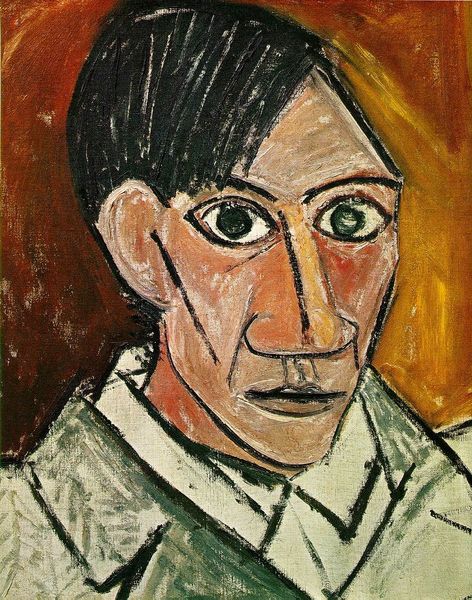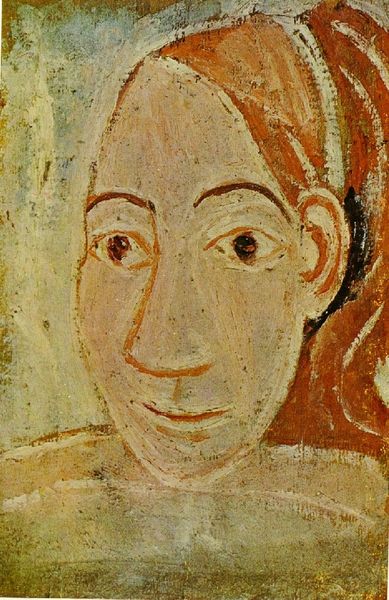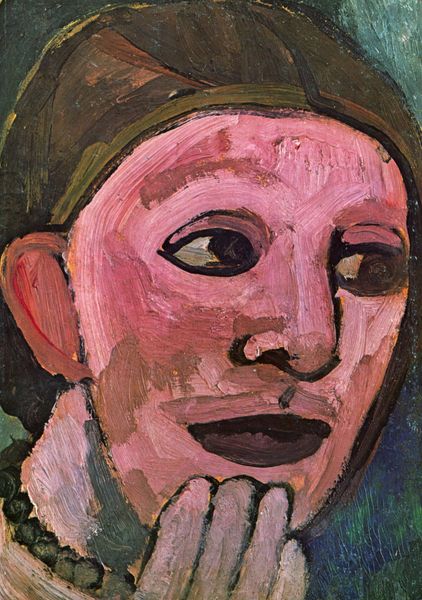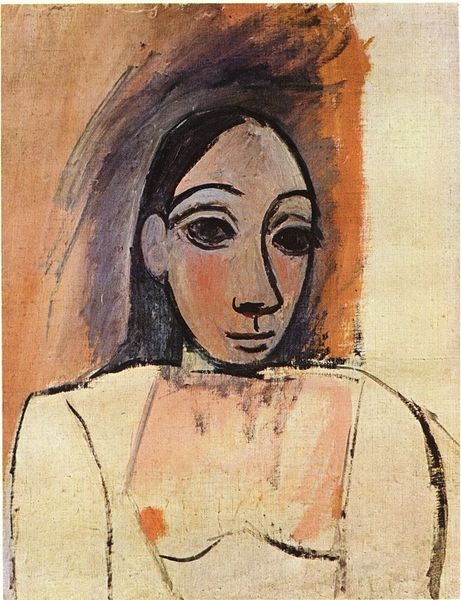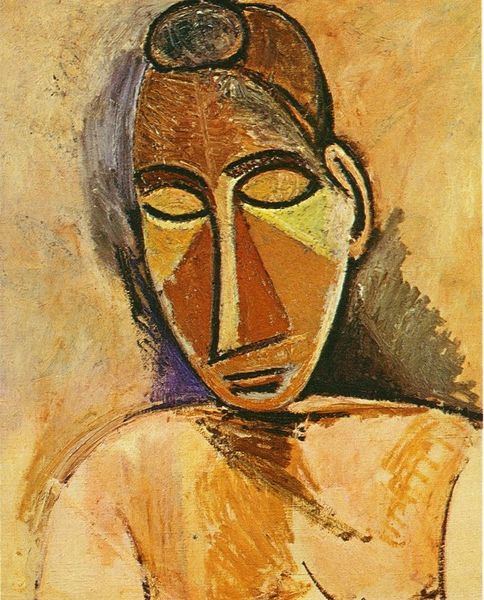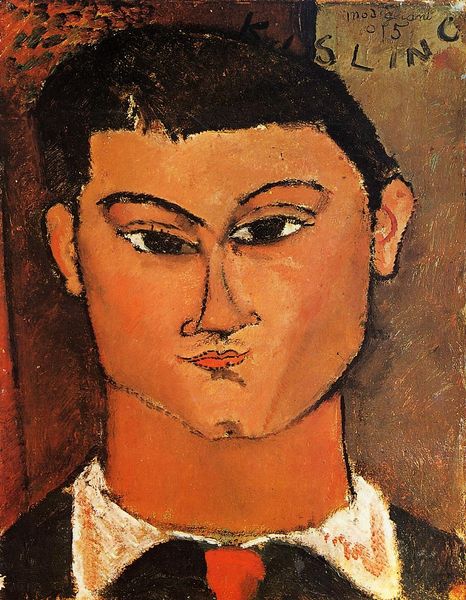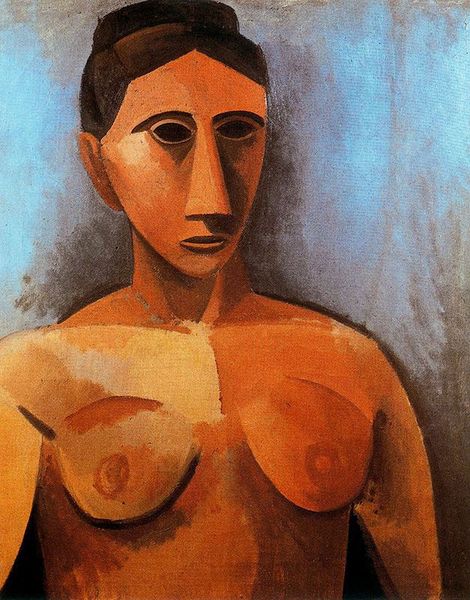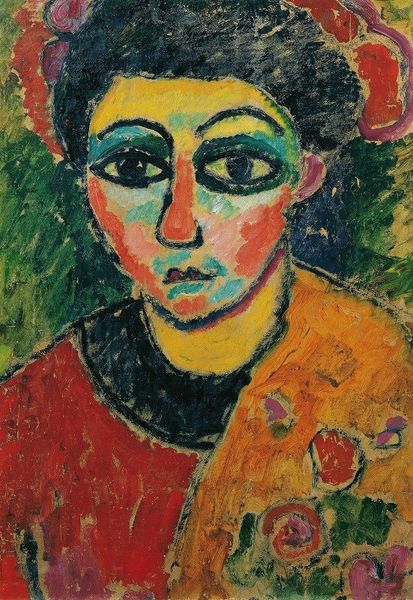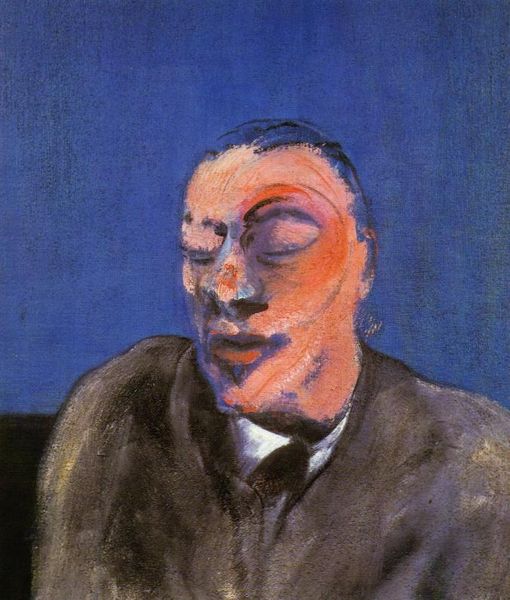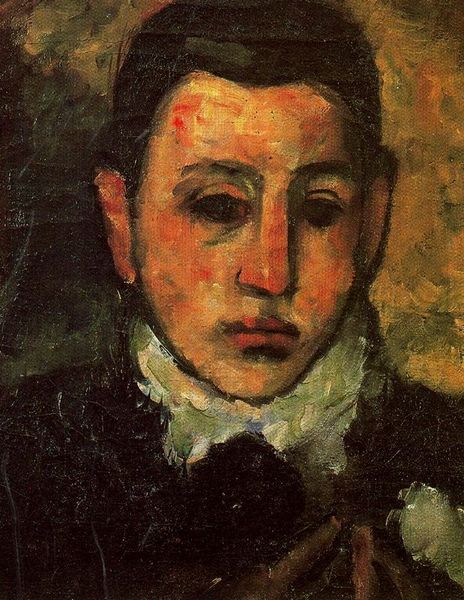
painting, oil-paint
#
portrait
#
cubism
#
self-portrait
#
painting
#
oil-paint
#
oil painting
#
expressionism
#
modernism
Copyright: Public domain US
Curator: We're now viewing Pablo Picasso's "Self-Portrait," rendered in oil on canvas in 1906. Editor: My initial response is…vulnerable. Despite the starkness of the lines and colors, there's a raw, almost childlike quality. Curator: Indeed. Observe how Picasso simplifies form, edging toward abstraction, yet maintains a compelling representational element. The face, ochre against a muted green background, lacks intricate detail but possesses profound expressive power through line and color. Editor: The large, dark eyes feel intensely symbolic, almost primordial. In many cultures, the eye is seen as a window to the soul, and Picasso amplifies this. It’s as though he's laying bare his inner self, not just depicting his likeness. Curator: Consider the application of paint. Loose brushstrokes create a textural dynamism that undermines any sense of classical refinement. The work isn't attempting to mimic reality but rather present a constructed reality – a distillation of self. Semiotically, this moves far beyond merely representing a face. Editor: I wonder, too, about the symbolic weight of the simplified forms in relation to his artistic development. Picasso's career can be viewed as an excavation of increasingly raw, honest emotion—from the Blue Period’s melancholy to the distortions of his later Cubist work. Curator: Precisely. It’s easy to forget, amidst the later angular fragmentation of Cubism, the extent to which the work here demonstrates a deep attention to composition. The formal relationship between the colors themselves creates a visual tension. Editor: A tension which resonates, psychologically. We see not just the artist, but the universal themes of identity and the search for authentic expression. This portrait, it is one of Picasso's defining works. Curator: Quite. It prefigures his more revolutionary aesthetic experiments. The piece encapsulates the evolution from representation toward abstraction; an artist deconstructing and reconstructing visual language. Editor: It seems he started to reflect in this image all of the symbolisms he experienced as a developing young artist. Curator: Ultimately, Picasso's self-portrait of 1906 leaves us contemplating the complex layers inherent to artistic creation and the continuous process of defining self through visual form.
Comments
No comments
Be the first to comment and join the conversation on the ultimate creative platform.

